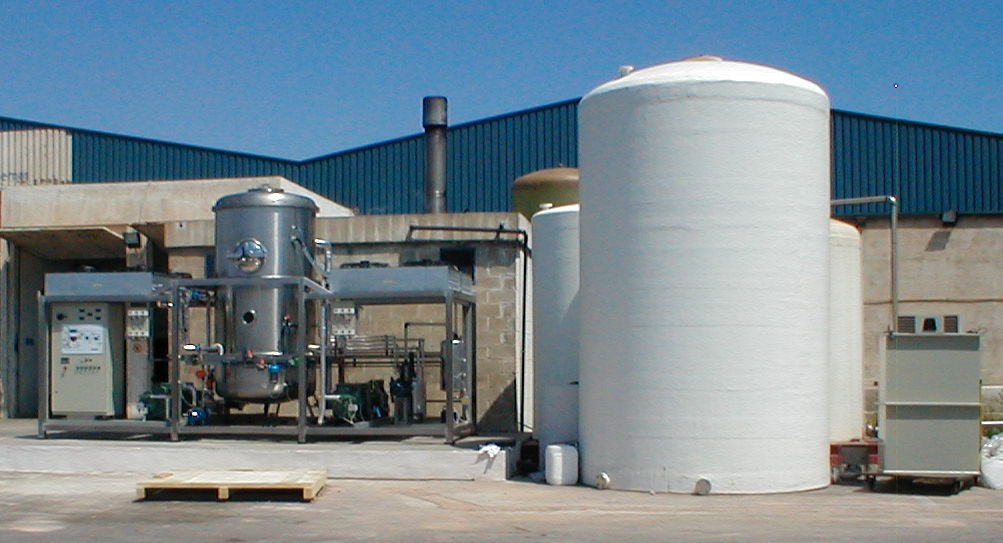VACUUM EVAPORATION: A SOLUTION TO HOSPITAL WASTEWATER
02-07-2019
THE PROBLEM
The wastewater produced by hospitals have or may have remains of chemical products, drugs, soap, cleaning products and disinfectant, also blood, urine, alcohol, remains of organic dissolvent, physiological serum and other toxic elements that must be treated before its disposal to the sewerage system.
The complexity that represents the composition of this type of water makes the external management of residues, the most common practice among these institutions.
The external management of the residue consists in accumulating the wastewater produced in each area of a hospital in big containers, so that once they are full, an authorized external manager, and specialized in this sort of residue, can collect it for its treatment.
C&G Ibérica has a vast experience working with external managers of hospital waste. SRCL CONSENUR CEE is a waste manager specialized in hospital waste. Since 2004 they have a Vacuum Evaporator model V-NT 12.000 in its plant in Cartagena, and since 2006 they have a Vacuum Evaporator model V-NT 10.000 in its plant in Zaragoza.
To this day, both evaporators operate continuously at their maximum capacity.

Image 1: SRCL CONSENUR plant in Cartagena - Model V-NT 12.000
INDUSTRIAL PLANT RESULTS: SRCL CONSENUR, HOPITAL WASTE MANAGER
Mass Balance: For each evaporated ton, 100kg of final residue and 900kg of clean water are obtained.
Distil quality:2.png)
Table 1: CONSENUR distil quality.
* A result exempt of Nitrogen is obtained as a result of a pre-treatment of neutralization.
CONFLICTIVE PARAMETERS
Hospital wastewater, due to the characteristics of its components present a series of conflictive parameters, in the table below it is shown how each component influence them: 1.png)
Table 2: Parameters and discharge limits established by AMB.
SOLUTION: VACUUM EVAPORATION
Vacuum Evaporation is a technology that allows concentrating wastewater produced in a wide variety of industrial processes at a low energetic cost. Thanks to these, precious substances can be recover, that dissolved in water have no value, or the maximum residue concentration can be obtain, reducing the costs of external management.
One of the main benefits of vacuum evaporation is that it can be applied to all types of water, regardless of their source. Moreover the clean water obtained after the evaporation process can be discharged in the sewerage system complying with the regulations, or even better it can be reused in the industrial process or other activities like cleaning or watering.
C&G Vacuum Evaporator can be explained as a boiler with a high degree of vacuum, that in the lower part has an exchanger that gives heat to the water to be treated (and that we want to evaporate) and at the top has another exchanger, that absorbs the heat and condensates the vapours produced in the lower part of the boiler.
The V-NT Series combines the vacuum in all the system that allows the evaporation of the water at a lower temperature than usual, at 31 º C, and the heat pump, that transforms the electric energy into thermal thanks to the presence of a compressor and the characteristics of the gas R407c.
INDUSTRIAL PLANT RESULTS: DOWTOWN AREA HOSPITAL FACILITY
C&G Ibérica, installed in February of 2019, a Vacuum Evaporator model V-NT 1.500, in one of the biggest hospitals in Spain, located in the downtown area. With the temporal installation of this evaporator it was proved that the technology of Vacuum Evaporation is efficient and can de applied to the treatment of hospitals wastewater.
In the table below, the characteristics of the wastewater that enters the evaporator, and the characteristics of the clean water (distil) obtained afterwards are shown. This analysis was carried out in C&G Ibérica lab, with samples obtained from the treatment process of the wastewater of a hospital located in Madrid where a V-NT 1.500 for tests was installed.
4.png)
Table 3: Distil trial in C&G Ibérica lab.
Note: The original residue may contain some chemical component more restrictive that the ones indicated in Table 3.
Mass balance
For every 1.000 evaporated litres of wastewater, 90 litres of clean water and less than 20 litres of final residue are obtained.
CONCLUSION
The result of using C&G Ibérica Vacuum Evaporators to treat hospital residue, is very positive considering it complies with all the requirements:
- Reduction of the external management costs with a payback of the installation in less than 2 years.
- Quantity of final residue <3%.
- Elimination of the chemicals contained in the water.
- Possibility of discharge or reuse of the evaporated water.
- Compact machine, installed in an interior room with reduce space.
- National maintenance (Spain).